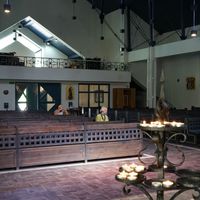Brentowo
6.92

Overview
Brętowo is a district of Gdańsk, located in the western part of the city, on the edge of the Oliwa Forests, along the Strzyża stream. The district is primarily characterized by residential buildings. Within its boundaries lies the Sanctuary of the Pregnant Mother of God in Matemblewo, which is the only one of its kind in the world and has its roots in the 18th century. Brętowo, known as Brentau until 1945, has a rich history dating back to the 19th century, when mills and forges, including copper forges and a gunpowder mill, were established here. The architecture is diverse, ranging from modern apartment blocks to traditional single-family homes. Brętowo is home to numerous historical sites, including remnants of German trenches, traces of an ancient Slavic settlement, and the Brętowo Cemetery. The area of the district lies within the Kashubian Lake District mesoregion and is rich in forested hills. The boundaries of Brętowo are largely defined by forested areas; it borders neighboring districts such as Oliwa, Wrzeszcz Górny, and Jasień. Brętowo plays an important role in transportation, facilitated by its main streets, such as Słowackiego Street and Rakoczego Street, as well as a developed bus and rail network, including a new stop on the Pomeranian Metropolitan Railway. The district does not have any high schools but does host a branch of the public library. The valuable natural areas of Brętowo are often used for walks; PTTK tourist trails run through here, and four natural monuments are located within the district. Roman Catholic parishes and a Jehovah's Witness congregation also operate in the area. The District Council consists of 15 councilors, and its chairman is Tomasz Gawłas. The district is characterized by a diverse history, rich culture, and architecture, making it an interesting place to live and visit.
Location
Tickets
Powered by GetYourGuide
You can also find here:
2025 Wizytor | All Rights Reserved
